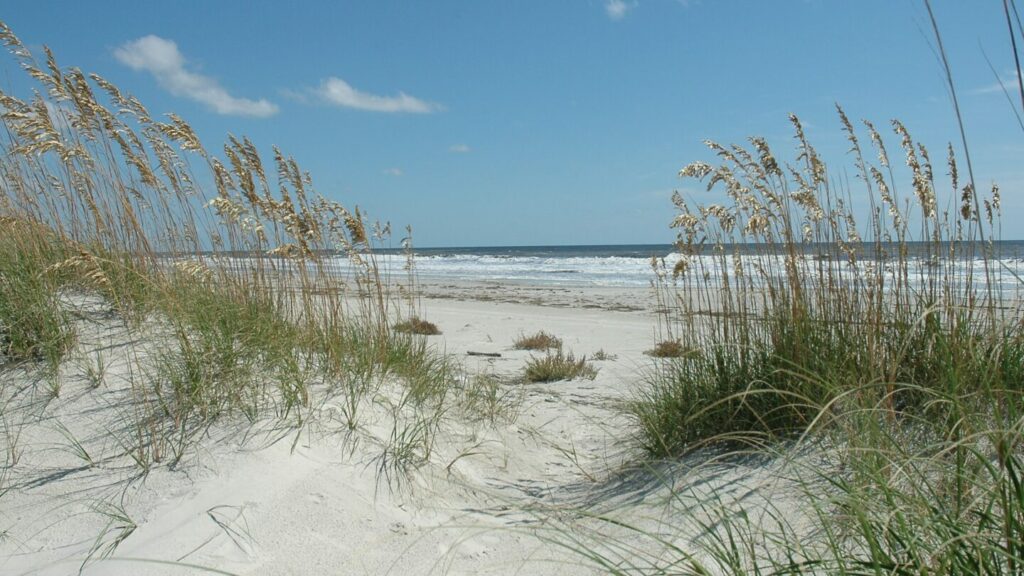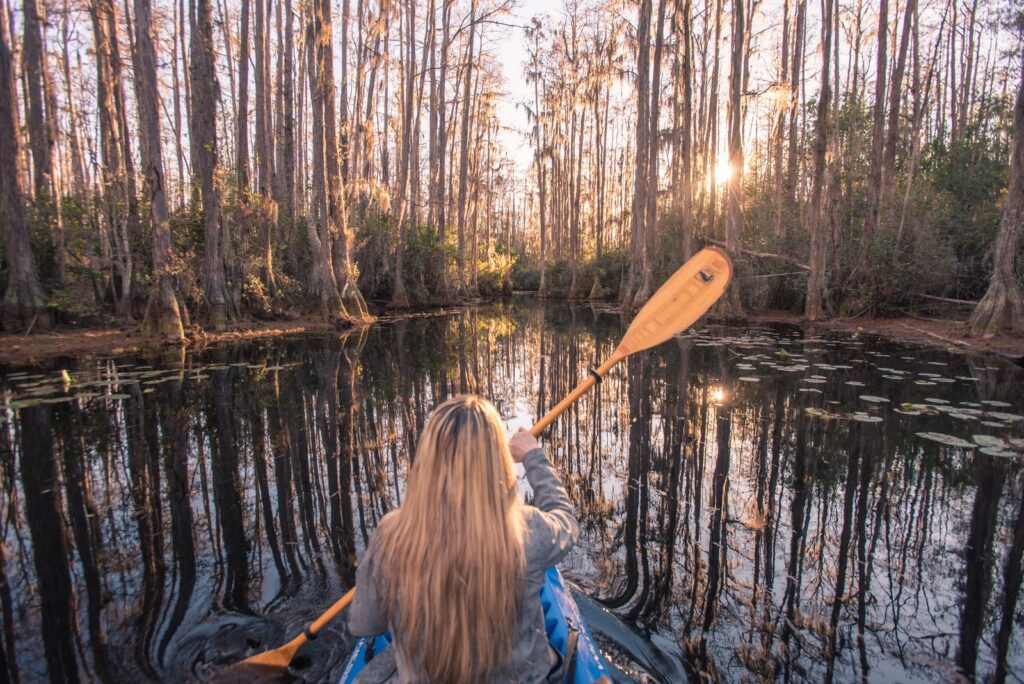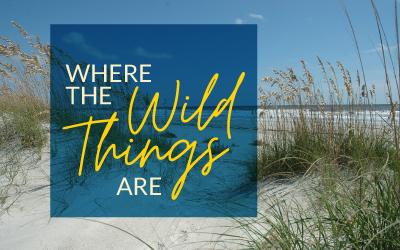
Making spring break plans? National and state parks here in Georgia have plenty to offer for those interested in outdoor adventures or history. You’ll spend more time enjoying and less time traveling (less money too) by planning a visit to one of these destinations. Walton Gas has compiled this list of five places ideal for a visit in March and April.
1. Our Top Pick: Cumberland Island National Seashore
Situated on Georgia’s largest and southernmost barrier island, Cumberland Island is 17.5 miles long with more than 36,000 acres of pristine maritime forests, undeveloped beaches, sand dunes and salt marshes — but not a single paved road or trail. Nearly 10,000 acres form the official national seashore protected by the National Park Service (NPS).
A 45-minute ferry ride from historic coastal town St. Marys on the Georgia-Florida state line takes visitors to the island. NPS restricts island access to only 300 people at a time. Camping is limited to seven nights.
Hiking, biking, beachcombing and fishing are ideal ways to experience the national seashore. For those looking to relax, peace and quiet are in abundance at the beach where none of the common trappings of tourism are allowed.
History buffs can take guided tours to see the remains of an American Indian settlement, a pre-Civil War plantation and a 22,000-square-foot mansion built by the wealthy Carnegie family. Along the way, guides also share the history behind the feral horses that graze in dune meadows and why the seashore is a primary nesting location for loggerhead sea turtles.
Know before you go:
- The park entrance fee is $15 for adults. No entrance fee is charged on Saturday, April 20, the first day of National Park Week.
- A roundtrip ferry ticket is $40 for adults. Add an extra $10 to transport a bike to the island. Ferries run twice daily. Reservations are strongly recommended.
- There are no stores, restaurants or services on Cumberland Island. Visitors should bring their own food, drinks and sunscreen.
- Park information: nps.gov/cuis
2. F.D. Roosevelt State Park/Little White House Historic Site
It’s a hiking and history two-fer when you combine a visit to Georgia’s largest state park with a side trip to 32nd president Roosevelt’s Georgia home. At 9,049 acres, the Pine Mountain park is a hiker’s and backpacker’s haven. More than 40 miles of trails wind through hardwood and pines, over creeks and past small waterfalls. On Saturdays, guests can play the Eye Spy 20 camera scavenger hunt, which provides a novel way to explore the park.
Stay in the area an extra day to check out Roosevelt’s Little White House, a state historic site in Warm Springs. Visitors can tour FDR’s home, which has been carefully preserved very much as he left it. A museum showcases exhibits such as FDR’s 1938 Ford convertible with hand controls, his Fireside Chats playing over a 1930s radio, his stagecoach and a theater.
Know before you go:
- Parking fee at the state park is $5 per vehicle.
- The historic site charges admission. Adult price is $13 plus tax.
- Guided tours of the Little White House are available on Saturdays and Sundays at 10 a.m. for $20 per person. Reservations are required.
- Park information: gastateparks.org/fdroosevelt and gastateparks.org/LittleWhiteHouse

3. Stephen C. Foster State Park
This remote park outside Fargo is a primary entrance to the legendary Okefenokee Swamp — one of Georgia’s seven natural wonders and the largest wetland in the South. Paddlers and photographers can enjoy breathtaking scenery and abundant wildlife. Alligators (an estimated 12,000 of them), turtles, raccoons, black bears, deer, ibis, herons, wood storks, red-cockaded woodpeckers and numerous other creatures make their homes in the 402,000-acre refuge. Reservations are needed for guided boat tours of the famed swamp. More adventurous visitors may wish to rent canoes, kayaks or jon boats for independent exploration.
Know before you go:
- Because Stephen C. Foster State Park is located within a National Wildlife Refuge, a $5 refuge fee is charged.
- Boat tour and canoe rentals require reservations. Day-use motorboat, canoe and kayak rentals are first come, first serve.
- The park is a certified International Dark Sky Park, making it a haven for stargazers.
- Park information: gastateparks.org/StephenCFoster
4. Ocmulgee Mounds National Historical Park
About 100 miles south of Atlanta near Macon, there’s a “gotta-see” found only in Georgia. Ocmulgee Mounds is a new national historical site that transports visitors back thousands of years — 12,000 years, in fact — to learn about the lives and cultures of the prehistoric American Indians who lived here. A series of short trails lead to popular points of interest such as earthen mounds built around 900 CE, a trading post site and temple mounds.
Civil War buffs will also want to visit. Park trails also lead to earthenworks that figured in the Battle of Dunlap Hill and the Battle of Walnut Creek.
Know before you go:
- Entrance is free.
- The park has one of the longest ADA-accessible paved trails in the national system.
- Bikes and ebikes are permitted on designated trails.
- Park information: nps.gov/ocmu
5. Chattahoochee River National Recreation Area
If you live near Atlanta and need a quality staycation, escape to Georgia’s most-visited national park. This recreation area encompasses 48 winding miles of river from Buford Dam at Lake Lanier to its confluence with Peachtree Creek just west of Atlanta. More than 3 million people visit the park each year to kayak, canoe, fish, float or hike the paths along the park’s shoreline. Head to the river’s northern reaches for a peaceful escape.
Know before you go:
- An entrance pass is required. Daily passes are $5 and an annual pass is $40. No entrance pass is required on Saturday, April 20.
- Download a park hiking map
- Park information: nps.gov/chat
